How to Fly With Your Dog Step-by-Step
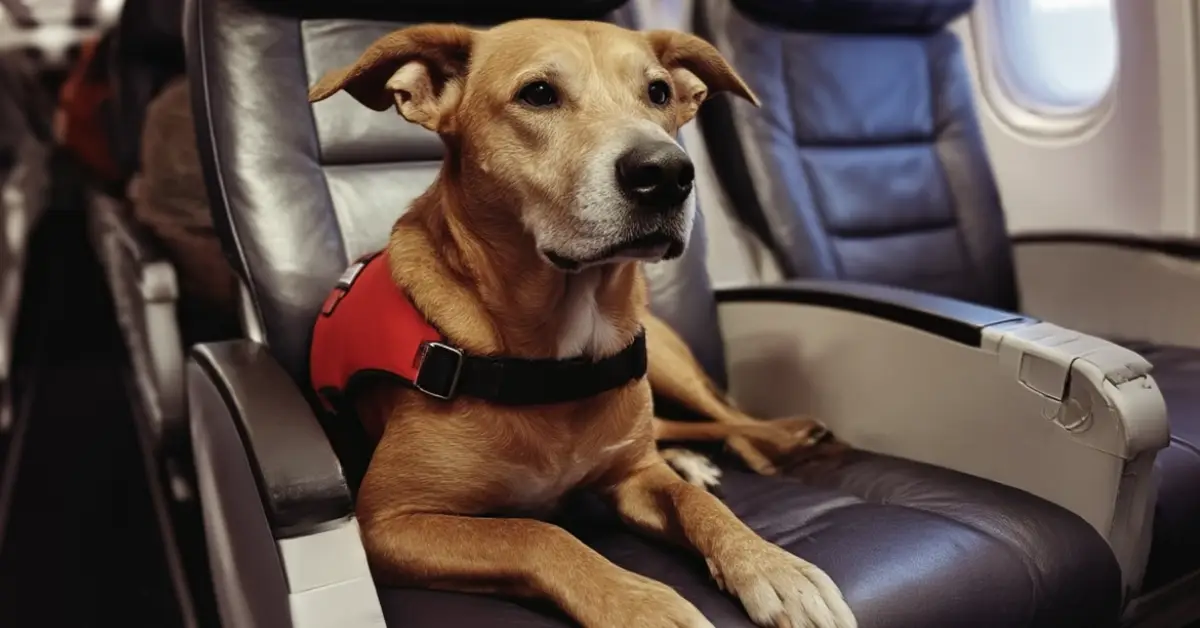
Taking your dog on an airplane is easy when you know the airline’s policies for both pets and service dogs, and you come prepared. When flying with a service dog, you will have more rights than flying with a dog that’s considered a pet, but the process is similar.
This guide walks you through everything you’ll need to fly with your dog, from documentation to boarding, and includes tips to help your companion adjust to traveling by plane, making the trip easier for both of you.
The Steps to Flying With Your Dog
- Check the airline’s pet policies
- Book as far in advance as possible with the airline that works for you
- Get any necessary documentation in order
- Prepare your dog for the travel experience
- Complete all necessary preparations for before and on the day of your flight
- Check in one hour before boarding at a minimum
- Monitor for signs of stress during and after the flight
In short, this is what you need to know about how to fly with your dog. For more details, like learning how early to show up and what to have prepared, we’ve got you covered. Below you’ll find information on each of the steps and travel tips from our team and experts who fly with dogs regularly.
Check Multiple Airline Pet Policies
If multiple airlines fly to your destination, especially with direct flights, check each of their pet policies. You’re looking for pet fees, size and breed restrictions, as well as which types of dogs can fly in the cabin vs. needing to go in the pet space that is separated from the cabin.
Some airlines, such as Delta, Alaska, and American Airlines, are considered more pet-friendly; however, policies can change regularly, so it’s essential to check before booking.
By knowing which airlines have lower fees and the airline’s size and weight limitations in the cabin, you can make sure your flights give you the most relaxing experience. Direct flights are usually best as you won’t have to stress your best friend with the process of boarding and exiting over and over again.
Pro-tip: If a direct flight is 6 hours long, but your dog needs to take potty breaks every 5 hours, consider an option with a layover around the third or fourth hour, allowing them to relieve themselves and get a quick stretch.
Book as Far in Advance as Possible
Some airlines have a limited number of dog-friendly seats or may only allow them in business class, which can book up fast. By booking as early as possible, you can help ensure you don’t get closed out of your first choice.
Pro-tip: If the flight is 2 months away, check the same flight in 2 weeks, 4 weeks, 5 weeks, and 6 weeks to see how many pet-friendly seats are available. If seasonal demand is equal, this could be a starting gauge for how many days you have until you need to make the reservation.
Get Necessary Documentation in Order
Your dog will not be able to fly if you do not have the documents required by the airline and the government. Each airline has a list of what is required, which may include:
- Veterinary and vaccination records
- A health certificate (especially on international flights)
- If your dog is a service dog, the DOT’s Service Animal Air Transportation Form
This is one of the most important things to have before flying with your dog. Failure to produce the correct and up-to-date paperwork may result in your dog being rejected from boarding the plane.
Prepare Your Dog for the Flight
Learning how to fly with your dog includes managing your dog’s and your own level of stress. That’s why good preparation before their first flight is essential. Here are some things you can do to prepare your dog for a flight:
- Crate training will help them learn not to have accidents and become accustomed to spending time in a travel carrier.
- Calming medications can be prescribed. If you notice anxiety and other symptoms, you can follow the veterinarian’s instructions and help calm your dog.
- Provide them with access to new scents, environments, and smells. Try taking them to pet-friendly buildings or a nursing home where they’ll be able to keep elderly people company and adjust to a different atmosphere.
- Download the airline or airport apps and familiarize yourself with the departure and arrival gates, as well as the location of the nearest relief area, so you can easily navigate through the airport.
Here’s where you can find pet relief areas at a few major airports:
- Hartsfield-Jackson Atlanta International Airport (ATL) provides indoor Service Animal Relief Areas in every concourse near Gates T7, A10, B33, C17, E15, F7, as well as D-Centerpoint.
- Los Angeles International Airport (LAX) has 11 animal relief stations, located both pre- and post-security. These include indoor post-security relief areas in Terminal 1, Terminal 2, and Terminal 6, plus outdoor pre-security areas on the Lower/Arrivals Level.
- Dallas/Fort Worth International Airport (DFW) has pet relief areas in each of its five terminals for traveling convenience, with designated areas inside security and outside entry doors on the lower level. Specifically, there are four designated pet relief areas located inside security at gates A29, B28, D18, and E31, as well as outdoor areas at gates A8, C2, C39, D15, D29, E2, and E38.
Another important thing is never to give your dog medication not prescribed for them, especially sedatives. Your dog’s veterinarian will know what’s safe based on your dog’s health history and breed.
Bonus tip: If you have an extended layover and did not prepare enough food for your dog, here is our list of dog-friendly foods at the airport.
Day Before and Day of Flight Preparations
Put a checklist together and pack your dog’s travel bag before the day of travel. Your packing list should include absorbent pads to relieve themselves in case of emergency, a foldable water and food bowl, as well as travel essentials.
In addition to packing a dog travel kit, do this on the day of travel:
- Limit food and water before the flight so they’re less likely to have an accident
- Get them enough exercise so they’ll be ready to sleep while on board
- Provide positive reinforcement to keep them calm when they show signs of being nervous
Some airports have pet areas where your dog can get a bit of exercise before or after a flight. Here are a few of them:
- Hartsfield-Jackson Atlanta International Airport (ATL) features “Poochie Park,” a 1,000-square-foot fenced dog park in the Ground Transportation area. This fully fenced park is equipped with benches and offers biodegradable bags for use.
- John F. Kennedy International Airport (JFK) offers the “Wooftop” in Terminal 5, a 4,000-square-foot outdoor garden patio with a designated pet area located after security across from Gate 28.
- Phoenix Sky Harbor International Airport (PHX) has three dedicated pet areas: “The Bone Yard” (approximately 2,700 square feet located at Terminal 4), “The Paw Pad” (approximately 2,200 square feet at Terminal 3), and “The Pet Patch” (about 490 square feet at Terminal 2).
Before counting on one of those parks for your airport visit, make sure there are no renovations or temporary closures.
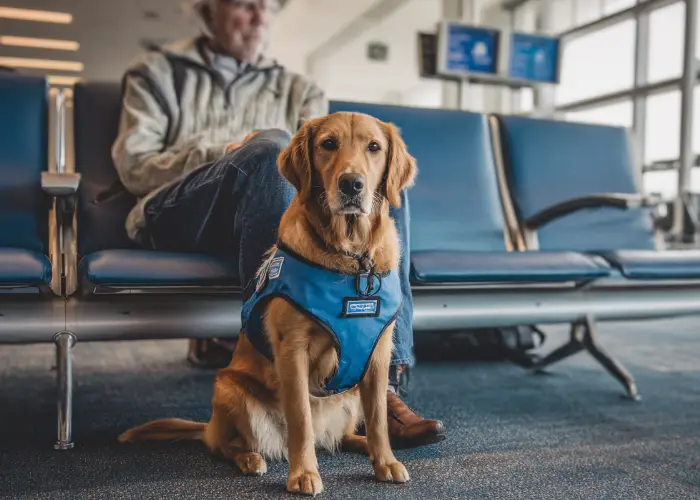
Check In at Least One Hour Before Boarding
When flying with a dog, you want to give yourself extra time to get through TSA. To reduce stress and not have to rush, get to the airport early and be fully checked in at least one hour before boarding begins.
The last thing you want to do is miss your flight because there are lines to get through security.
Monitor for Signs of Stress During and After the Flight
Your dog may be perfect during the flight, but begin showing signs of stress or anxiety after. Talk to the veterinarian before you fly and ask for any signs you should be on the lookout for, but also things that may seem concerning but are normal.
You should keep your veterinarian’s phone number on hand in case something does go wrong. By knowing what to look for and how to respond, whether it is giving them medicine for anxiety or taking them to a veterinarian at your destination, you can ensure they and you are always taken care of.
Learning how to fly with a dog is easy when you’re prepared. There may be some turbulence along the way, but most obstacles can be avoided by using the advice given above.
About the Author: The writing team at Service Dog Certifications is made up of folks who really know their stuff when it comes to disability laws and assistance animals. Many of our writers and editors have service dogs themselves and share insights from their own experiences. All of us have a passion for disability rights and animals.
Related Articles
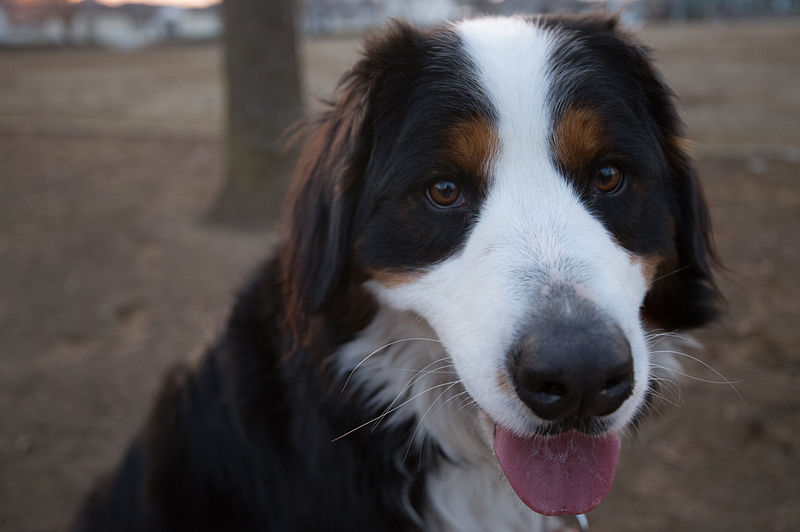
How Do I Fly With My Dog To Hawaii?
It’s travel season and Hawaii is the perfect destination for the summer. Kids are out of school, the weather is warm, and the tropical paradise known as Hawaii is a tourist destination fit for everyone. Even dogs! This blog post will give you some guidelines and information on bringing your pet to the most traveled […]

Read More
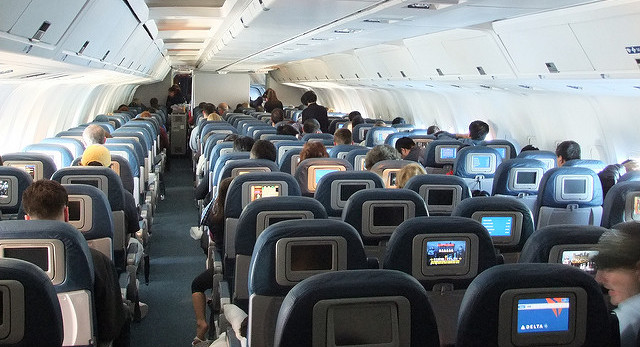
Delta Airlines – 2018 Service Dog Policy
Delta carries approximately 250,000 Service and Emotional Support Animals each year. However, as of March 01, 2018, they are tightening their policy for these working animals in an effort to reduce “misbehavior” by dogs (and other creatures). Although the carrier is required by law to admit Service animals and ESA’s into the cabin of the […]

Read More
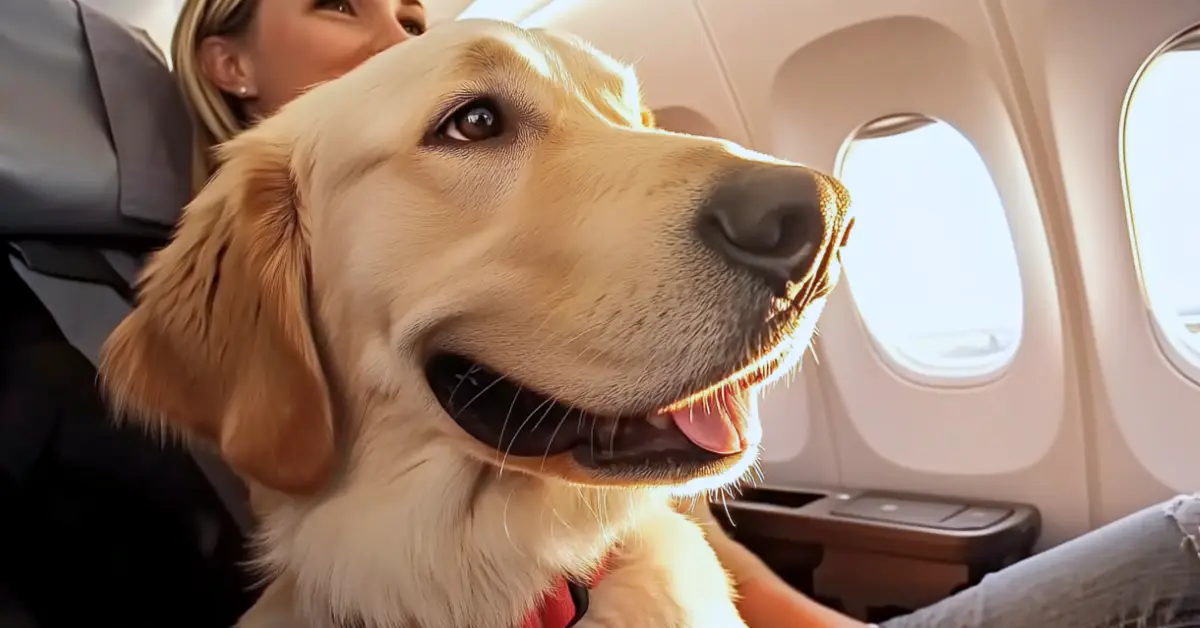
Flying With a Service Dog – The Ultimate Guide
This article was last updated on December 11th, 2024, to reflect the latest updates in the DOT’s rules for air travel. This is a guide to everything you need to know to travel with your service dog or psychiatric service dog (PSD). Service dogs (of any size and weight) have a legal right under the […]

Read More